Now Reading: Top 10 Best Places to Visit in Quảng Bình – Caves, Beaches & Cultural Landmarks
-
01
Top 10 Best Places to Visit in Quảng Bình – Caves, Beaches & Cultural Landmarks

Top 10 Best Places to Visit in Quảng Bình – Caves, Beaches & Cultural Landmarks
1.Paradise Cave

Close to the center of the Phong Nha-Kẻ Bàng National Park in Quảng Bình Province, Paradise Cave (Thiên Đường Cave) is a beautiful sight and an important attraction in Vietnam. Because it stretches for 31.4 km and its widths vary from 60 to 150 meters, it holds the title of the longest dry cave in Asia. Because of its awe-inspiring features, Cappadocia is a top spot for people interested in nature and exciting experiences.
Relevance and Significance
- In 2005, a local villager discovered Paradise Cave and from there, the British Caving Association examined it. This captured worldwide notice. Estimates show that the cave took hundreds of millions of years to form which makes it both awe-inspiring and very valuable to geology. Because of its unbelievable stalactites and stalagmites which shine under the cave’s lights and look like a naturally made stone palace, the cave came to be called “Paradise.”
- It ranks highly internationally in terms of both scientific importance and beauty which makes it a major natural wonder in Southeast Asia. The way the cave is built and its structures allow you to see more about Earth’s past and its tall rooms fascinate everyone who visits.
- What are the reasons to visit Paradise Cave?
Importance in Science: A museum showing the history of planetary changes.
It is Considered one of Asia’s Finest Caves for Their Stunning Beauty.
Activities are available for those wanting a casual tour as well as for those who love thrilling experiences.
Phong Nha-Kẻ Bàng National Park is situated in a UNESCO World Heritage Site.
- When Is the Best Time to Go
- The most suitable months to see Paradise Cave are March through August. These months make the cave simple to enter and the walking routes stay safe and dry. Since it rains heavily from September to November, it is not a good time to visit.
2.Phong Nha Caves

Phong Nha Caves which are located at the core of Phong Nha-Kẻ Bàng National Park, are an amazing series of underground caves, tunnels and limestone structures that go on for miles beneath the karst mountains of Quảng Bình Province in Vietnam. Phong Nha is commonly known as the “First Wonder of Caves” because it has incredible natural scenery and ancient history.
The role of the Constitution and its significance”
While the local people have respected and known about Phong Nha Cave for a very long time, only when British and Vietnamese scientists analyzed the cave in the 1990s did its size and grandeur become popularly known. There is 44.5 kilometers worth of caves, yet only a small part is open for visitors.
The archaeological value of the site really stands out as fascinating. Stone altars and letters from the 9th and 10th centuries inside the cave belong to the Cham and show their early religious and spiritual activities. They make Phong Nha important in Vietnamese history, showing its impact on nature as well as on cultural and spiritual beliefs from the past.
The name Phong Nha was given because the many sharp stalactites inside the cave give it a stance of guarding the entrance like a set of teeth.
The Best Times of the Year
- During the dry season, between March and August, is considered the best time to see Phong Nha Caves. Access by water during these months is safe and reliable and the river stays calm and clean.
- Skip the rainy season (September to November), because rainwater can make visit access difficult and sometimes stops tours temporarily.
3.The Duck Stop

If exploring caves and jungles is not on your mind anymore and you’re looking for something delightful in Phong Nha – Quảng Bình, make a trip to The Duck Stop. In beautiful Bong Lai Valley, diners come to this family-run farm for fun, food, farming and to see the ducks.
What went before and why.
The small family farm turned into a popular place for local tourism. A Vietnamese family started The Duck Stop so guests could see rural life in a casual, realistic way.
It shows you what it’s like for local farmers, their common crops, their daily routines and how they fit in nature. The farm shows sustainable tourism in practice because it gives locals jobs and helps them keep their cultural background alive, letting visitors interact with them.
- Best Season
The best months for The Duck Stop are March to August when the weather is bright, the rice fields look lovely and duck leading and riding buffaloes is enjoyable. Taking pictures in the morning or late afternoon is better because it is cooler and the light is soft. - Avoid traveling during the rain fall months (September–November), as the ground can become soggy and some attractions may not be available.
4.Son Doong Cave

Within the unspoiled wilderness of Phong Nha-Kẻ Bàng National Park in Quảng Bình Province, Vietnam, is one of the world’s greatest natural sights: Son Doong Cave. Prompted by the efforts of Vietnamese scientists, Son Doong was identified as the biggest and most awe-inspiring cave only in the last few years. Not just a cave, it is also full of rare plants and animals, prehistoric remains and incredible views that seem to come from a fantasy world.
History and Learning
Although local jungle man Mr. Hồ Khanh was the first to discover it in 1991, the British Cave Research Association fully surveyed the cave in 2009–2010. The team discovered something that amazed people: a huge underground chamber big enough for a 40-story building and its own weather.
After appearing in National Geographic Magazine (2011) and being featured on the BBC, ABC News and numerous documentaries, Son Doong was rightly acclaimed throughout the world.
When To Visit
- Cave exploration can take place from January right through August. Now is a good time for jungle trekking and exploring caves because the weather is dry.
- January – April is the best time for comfortable and enjoyable hikes.
- In the months of May until August, it gets a bit warmer, but little keeps tourists from coming.
- At this time of year, the boats are closed out of concern for flooding and too much rain.
5.Tu Lan Caving Center

Tu Lan Cave System is discovered within the rugged wilderness of Minh Hòa District, close to Phong Nha-Kẻ Bàng National Park in Quảng Bình Province. The place is famous for its winding jungle paths, hidden rivers underground and dramatic limestone formations which make this a special caving destination for those who love both adventure and exploration.
Significance
- Tu Lan Cave System has been gradually formed by nature over millions of years. It includes:
- Sparkling speleothems: stalactites, stalagmites, rimstone pools and cave curtains.
- Underground rivers: you might have to swim through caves while on many hiking trips.
- A special array of plants and animals: the area in the Phong Nha system supports diverse species.
- The site is guided by Oxalis Adventure, a responsible operator whose main goal is to safeguard the environment of the region. Because there are no structures in the caves, people exploring them think they are finding something truly wild and unique.
Best Times to Go
Tu Lan is best explored when it’s dry which is from November to August.
Trekking in Nepal gets easier in the winter season (November to March).
April to August is when the weather and water temperature are ideal for going through the river caves by swimming.
Rainfall increases during September – October, so the park is closed for safety.
6.Tien Son Cave

An underground treasure, Tiên Sơn Cave is found in the pristine karst region of Phong Nha-Kẻ Bàng National Park. Although Phong Nha Cave gets most of the attention, Tiên Sơn Cave is just as lovely, quieter and has dry areas bedecked with ancient features and views of the national park below.
History and the Process of Discovery
The discovery of Tiên Sơn Cave (Dry Cave) happened in 1935, made by a group of the local people. Its position is about 200 meters above Phong Nha Cave and it was created in the same karst system many millions of years ago. Eventually, water receded at Tiên Sơn, making a large dry room full of spectacular formations.
Whereas Phong Nha has a river inside, the dry cave of Tiên Sơn is appreciated for its excellent acoustics and colorful stalactites that look like crystal chandeliers on the ceiling.
Significance
- Tiên Sơn has importance in geology and also in terms of culture.
- Geological Effect: It illustrates the progress of karst formation and cave evolution, where underground rivers carve the caves and following displacement leave the dry chambers full of amazing dazzling minerals.
- 🎵 The Tiên Sơn Cave, known locally by its melodic name, is special for its great acoustics. Certain designs enhance the softest noises so much that the sound feels almost like music.
- Fairy Mountain is the name of the cave and local tales say ancient fairies came to Tiên Sơn, making its reputation special and unique.
When is the Best Time to Go
- You should visit Tiên Sơn Cave between March and August, as the weather is dry and the sky is clear which helps with walking and seeing the scenery around you.
- In March, April and May, the weather is comfortable, with lots of clear skies.
- 🔥 The weather is hotter in June to August and you can see well inside the cave.
- There could be slippery areas in September, October and November due to the rain; the stair climb is therefore not recommended during this period.
- December through February: Not all facilities will be operating and the number of cave tours may be reduced.
7.Hang Tối

Hidden inside Phong Nha-Kẻ Bàng National Park, Hang Tối or Dark Cave, is one of Vietnam’s most exciting natural spots. Not only is it a cave, but it delivers adrenaline, mud, water and stunning karst views — which is great for people wanting adventure and nature.
- The role of history and exploration.
- The British Cave Research Association (BCRA) was the first to study Hang Tối in the 1990s, even though people living in the area had known about it for a long time. The cave is within the Phong Nha-Kẻ Bàng limestone system which has some of the most ancient karst landscapes on the continent, dating back to over 400 million years.
- Because there is no artificial lighting inside, Hang Tối was given a name that means “Dark Cave”. Everyone inside the cave must put on headlamps and protective clothes as there is no electric lighting.
- Hang Tối is frequently included when people visit Phong Nha or stay at neighboring homestays and they usually see Paradise Cave too. One thing contrasts the other: Paradise Cave is a sight to see, quiet and Hang Tối will make you eager for some serious exploring.
- The experience will begin with ziplining, lead you into the cave through swimming, continue with traveling in muddy, dark chambers and end with kayaking and river swimming. There are showers and changing facilities at the eco-tourism center on the property.
The best time of year is October.
- It’s best to come to Hang Tối when the river is at its driest and warmest which makes ziplining and swimming comfortably possible.
- It is best to go in March to August because the weather is warm and sunny for activities near rivers.
- It’s accessible in September, October and November, although there might be light rain on selected days.
- During these months (December through February), temperatures are lower, rain is more likely and some tours might be canceled if it’s unsafe.
8.Quang Phu Sand Dunes

Just a few kilometers from downtown Đồng Hới you can find the Quang Phú Sand Dunes, offering an unexplored and wondrous landscape where desert meets the green fields and blue waves of Quảng Bình Province. Because of its always-changing forms, fine golden sand and unique sunrise and sunset, this is one of Vietnam’s hidden treasures.
How technology is important and how it has changed over time
Although Quang Phú lacks the ancient past of Vietnam’s old towns, its meaning comes from how it was formed and what distinguishes it from other places. Millennia of winds molding the land have pushed these dunes from the ocean and made them into a distinctive coastal desert ecosystem usually rare in this region.
There has been a shift in local tourism, where people are now noticing its natural beauty, but tourism infrastructure is still being developed and it’s generally much calmer than the central area’s popular beaches.
This landform being close to Đồng Hới lets outsiders enjoy its slower pace and peaceful charm, made possible by the colorful market, relaxing riverside life and various homestay places.
🌞 Best Period for Visitors
- During the dry season, skies are clearly visible and the wind helps make the dunes stand out in their most unique way.
- atmospheres during March–August are best for capturing sunrise/sunset among other activities.
- The golden light can be seen early in the morning (5:00–7:00 AM) or in late afternoon (4:30–6:30 PM).
- From September through November, the rainy season starts and the sand might turn compact or turn into mud in low-lying parts.
- These months are the coolest and there are strong winds which are best for seeing fantastic dunes and enjoying some quiet time.
9.Bai Da Nhay

Only 30 kilometers from Đồng Hới city, Bãi Đá Nhảy attracts visitors because of its remarkable rocky coastline, blue water and calm environment. Because of the way the rocks appear to jump out of the water, it is called “Jumping Stone Beach.”
How history and its significance are important to understanding a nation.
- People from the area and many travelers have always valued Bãi Đá Nhảy for its geology and cultural significance. Millions of years of wind and waves have turned the rocks here into bizarre and impressive sculptures.
- Other than being beautiful, the area is significant for its cultural heritage.
- 🐚 Coastal Way of Life: Families who live in nearby villages have depended on fishing and the sea for their way of life for many generations.
- Due to the variety of life the rocks and tidal pools provide for, they help make this stretch of coast quite an important part of the ecosystem.
- 🏞 Spiritual Beings: The community believes that the rocks hold the spirits of the sea and they usually hold small ceremonies to pay tribute to the water.
The finest time to pay a visit
- 🌞 The early morning (sunrise) is a popular time because the light is soft and perfect for both thinking and photography.
- During the Dry Season (from March to August), temperatures are pleasant and there is hardly any rain.
- Don’t visit during the woods’ rainy season (September to November) because the paths and water may be slippery.
- Chilling at the beach in late afternoon lets you enjoy comforting cool temperatures and the sight of the beautiful sunset.
10.Phong Nha Botanic Garden

Within Phong Nha-Kẻ Bàng National Park is the Phong Nha Botanic Garden which allows visitors to relax in one of Vietnam’s most beautiful natural areas. Due to its primary forest, many waterfalls and natural swimming pools, this garden attracts those who love nature and adventure.
Explanation and purpose
- To protect the many varieties of plants in the area, the Phong Nha Botanic Garden was established, also giving people a convenient place to learn about the rich biodiversity in the UNESCO-listed Phong Nha-Kẻ Bàng National Park.
- 🌳 The garden helps conserve primary forests which are home to a diverse range of rare plants. Many different kinds of wildlife live in the area.
- Waterfalls and natural pools combine beauty with a positive effect on the local environment.
- 🛖 Cultural Link: The garden helps eco-tourism by encouraging sustainable ways to enjoy nature and learn about how local efforts support conservation.
Best Seasons to Visit
- Trekking, swimming and camping are advised in the Dry Season (March to August) since there is little rain and trails are clear.
- During the rainy season (September to November), the ground may be wet and some of the usual water features could be hidden or hard to access.
- When it’s cooler (December to February), you’ll enjoy trekking but swimming might not feel as inviting.
Related articles : Top 10 Best Places to Visit in Quảng Nam – Hoi An, My Son, Beaches & Cultural Gems
Stay Informed With the Latest & Most Important News
Previous Post
Next Post
-
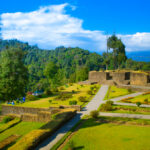 01Top 5 Best Places Visiting in Gyalshing – Monasteries, Lakes & Scenic Escapes
01Top 5 Best Places Visiting in Gyalshing – Monasteries, Lakes & Scenic Escapes -
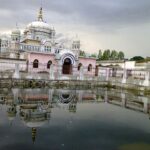 02Top 5 Best Places Visiting in Panna – Temples, Waterfalls & Wildlife Escapes
02Top 5 Best Places Visiting in Panna – Temples, Waterfalls & Wildlife Escapes -
 03Top 5 Best Places to Visit in Malerkotla – Malerkotla Fort, Sheesh Mahal & More
03Top 5 Best Places to Visit in Malerkotla – Malerkotla Fort, Sheesh Mahal & More -
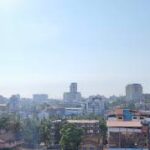 04Top 10 Best Places Visiting in Dakshina Kannad for Culture, Nature & Coastal Charm
04Top 10 Best Places Visiting in Dakshina Kannad for Culture, Nature & Coastal Charm -
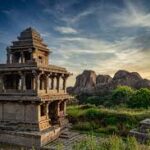 05Top 2 Best Places Visiting in Chitradurga for History, Nature & Adventure
05Top 2 Best Places Visiting in Chitradurga for History, Nature & Adventure -
 06Best Places Visiting in Shopian – Explore Top Attractions & Hidden Gems
06Best Places Visiting in Shopian – Explore Top Attractions & Hidden Gems -
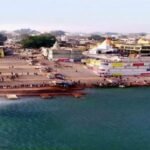 07Best Places Visiting in Narmadapuram – Temples, Waterfalls & Wildlife Escapes
07Best Places Visiting in Narmadapuram – Temples, Waterfalls & Wildlife Escapes












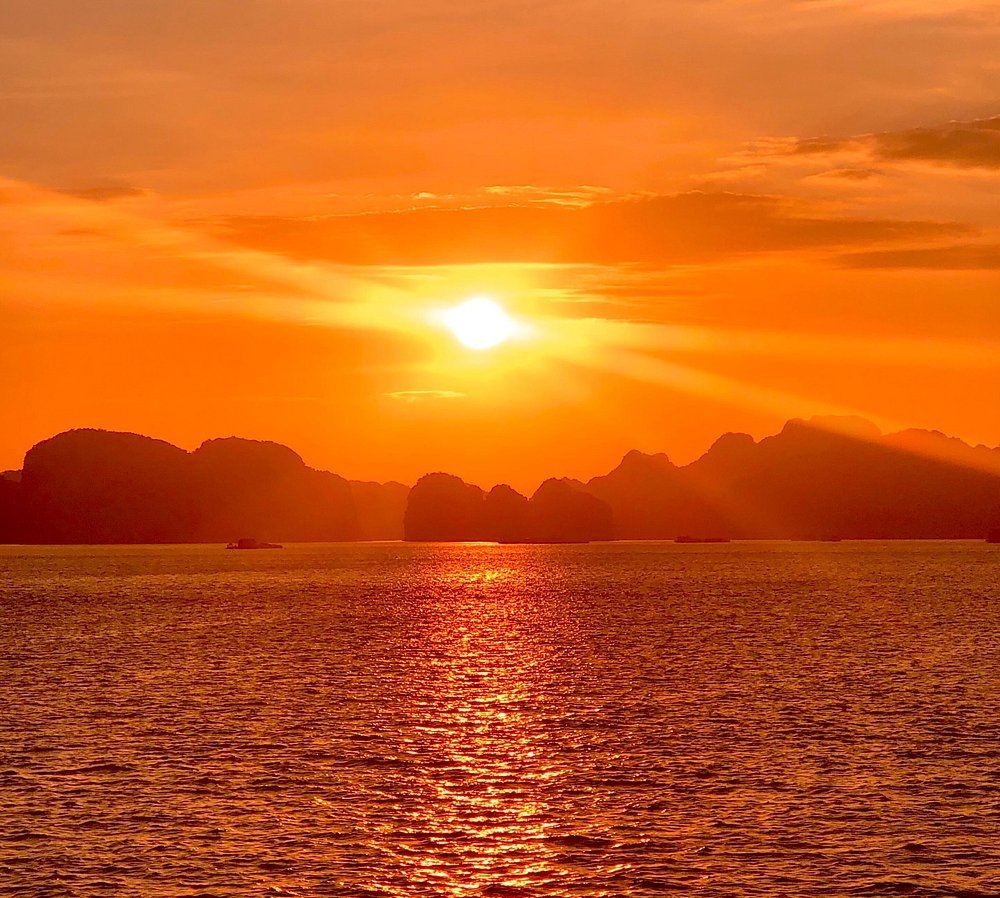

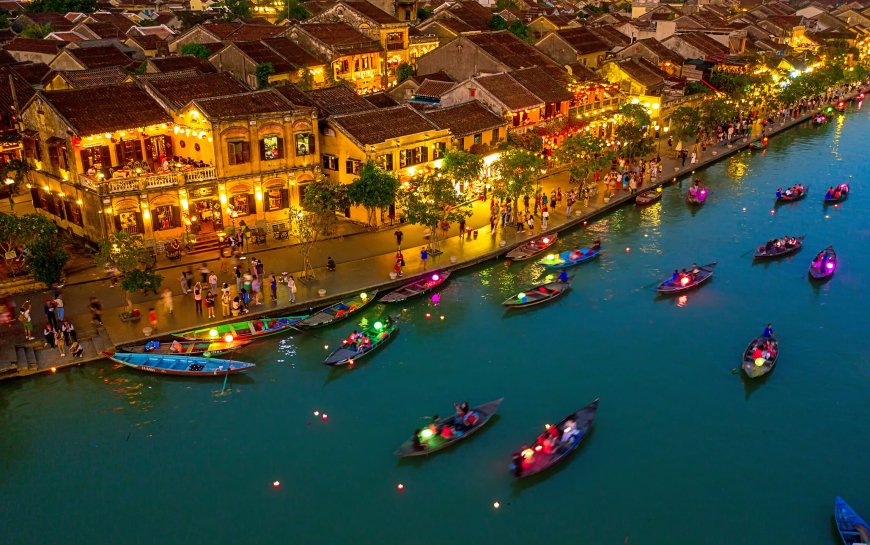

Pingback: Best Places to Visit in Phú Yên – Explore Beaches, Caves & Cultural Landmarks